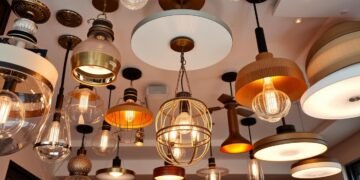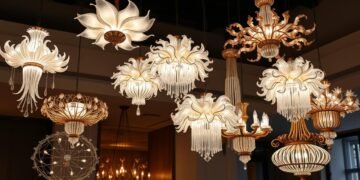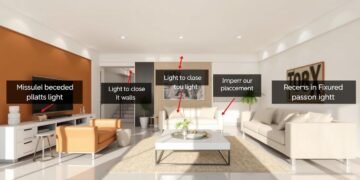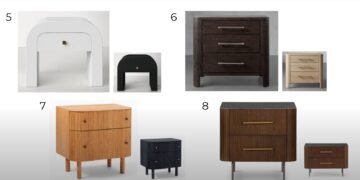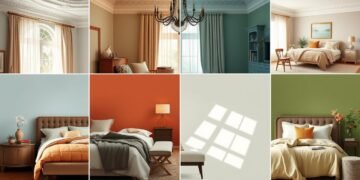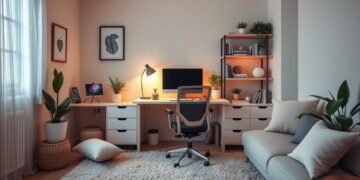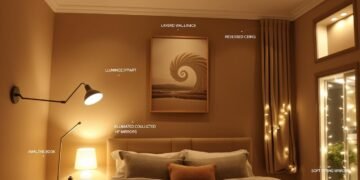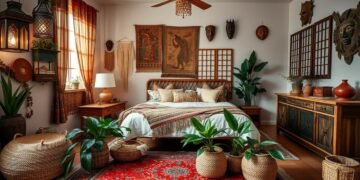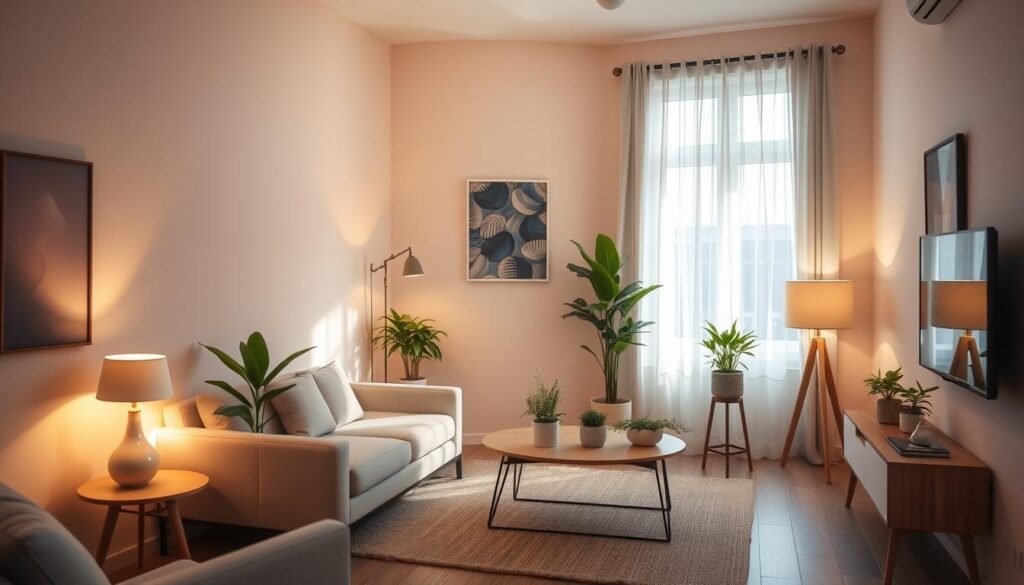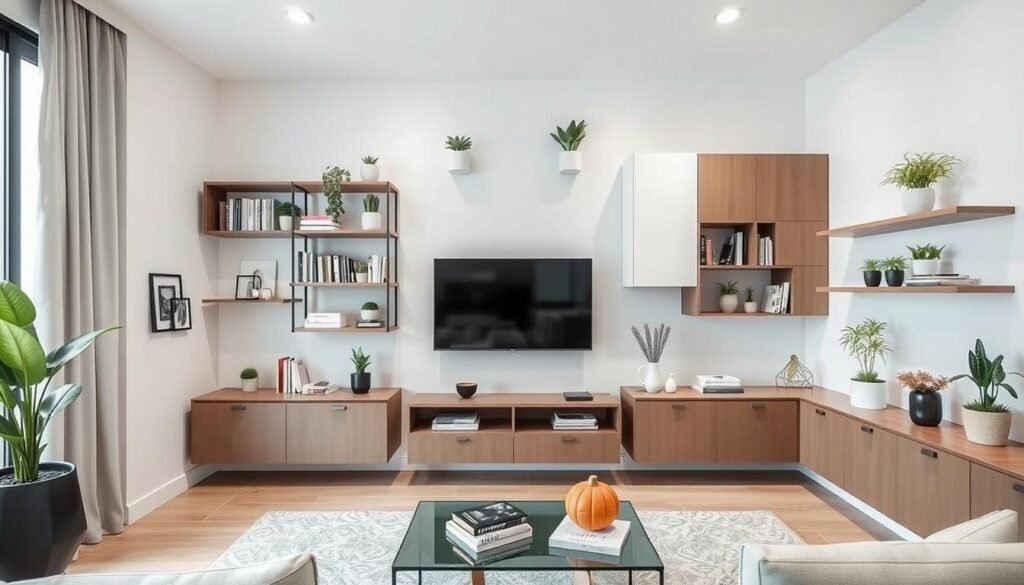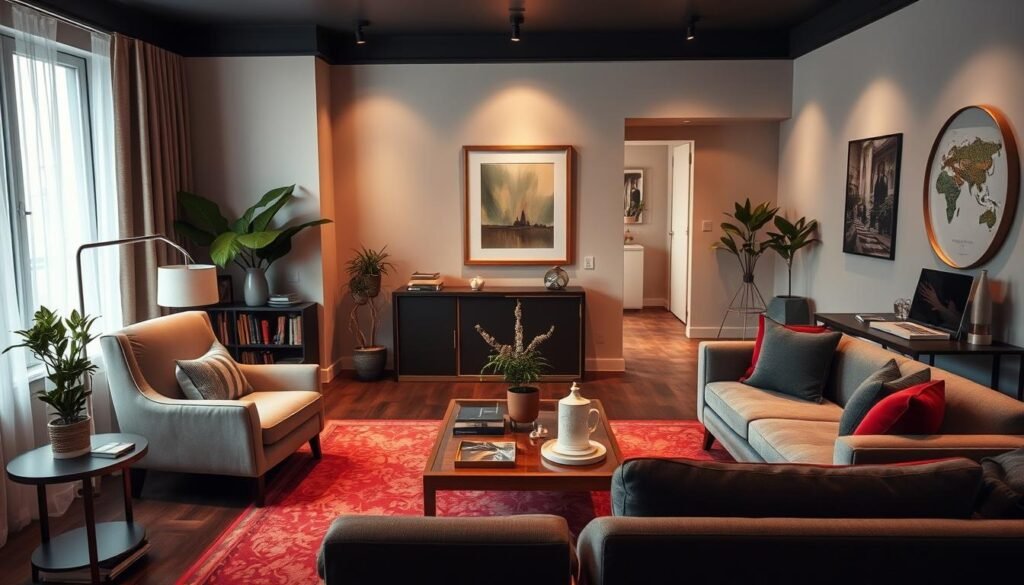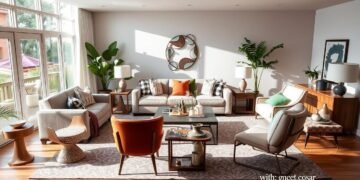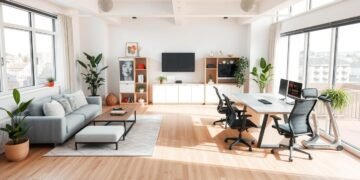Alex, a young homeowner, moved into his first apartment. It was cozy and charming, showing his vibrant personality. But, he soon found arranging furniture in his small living room was tough. He wanted to make the most of his space, aiming for a functional and beautiful room1.
With the right strategies, you can turn your small living room into a stylish and cozy space. By planning your furniture layout well, using space-saving solutions, and adding smart design elements, you can make it seem bigger. This guide will show you 8 effective ways to arrange your furniture and make the most of your small space1.
Table of Contents
- 1 Understanding Small Living Room Layout Fundamentals
- 1.1 Creating Effective Traffic Flow
- 1.2 Defining Focal Points in Your Space
- 1.3 Relatedarticles
- 1.4 8 Tips for Balancing Symmetry and Asymmetry in Your Furniture Layouts
- 1.5 5 Effective Layout Strategies for Multi-Purpose Rooms & Shared Spaces
- 1.6 6 Virtual Tools & Apps to Perfect Your Layout Before You Buy
- 1.7 Balancing Visual Weight
- 2 Small Living Room Furniture Layout: Essential Planning Tips
- 3 Maximizing Space with Strategic Furniture Placement
- 4 Choosing the Right Scale and Proportions
- 5 Multi-functional Furniture Solutions for Compact Spaces
- 6 Creating Visual Flow with Angles and Curves
- 7 Lighting and Color Strategies for Small Spaces
- 8 Incorporating Storage Without Sacrificing Style
- 9 Zoning Techniques for Open-Plan Living Areas
- 10 Conclusion
- 11 FAQ
- 11.1 How can I create effective traffic flow in a small living room?
- 11.2 What are some strategies for defining focal points in a small living room?
- 11.3 How can I balance the visual weight of furniture in my small living room?
- 11.4 What are the key steps in planning a small living room furniture layout?
- 11.5 How can I maximize space by strategically placing furniture in a small living room?
- 11.6 What type of furniture should I choose for a small living room?
- 11.7 How can I add visual interest and flow in a small living room?
- 11.8 What lighting and color strategies can make a small living room feel larger?
Key Takeaways
- Prioritize a focal point to anchor the room’s design
- Pull furniture away from walls to create a more spacious feel
- Balance visual weight with strategic placement and scale
- Utilize multi-functional pieces to maximize storage and functionality
- Incorporate curves and angles to add visual interest and flow
Understanding Small Living Room Layout Fundamentals
Creating a good layout for your small living room is key. It makes your space look good and work well. By knowing about room flow, space planning, visual balance, and furniture proportions, you can make your small area cozy and welcoming2.
Creating Effective Traffic Flow
For room flow, guide people around your seating areas, not through them. This keeps the room open and makes gatherings better. Also, don’t put TVs or big items in busy spots, as it can block the way2.
Defining Focal Points in Your Space
Having a clear focus in your small living room is important for space planning. This could be a fireplace, a big piece of art, or a TV. Place your furniture around this point to make your room look balanced2.
Balancing Visual Weight
To get a balanced look, think about your furniture’s size and where it goes. Don’t push all furniture against walls, as it makes the room feel tight. Instead, leave some room between furniture and walls for better room flow. Mixing big and small pieces helps balance your space2.
| Furniture Placement Recommendations | Ideal Measurements |
|---|---|
| Distance between large furniture pieces | 30-36 inches (24 inches in small living rooms)3 |
| Seating distance for conversation | 3-10 feet apart3 |
| Distance between coffee table and sofa | 14-18 inches3 |
| Distance between sofa and TV | 7 feet3 |
| Sofa distance from wall | 3-5 inches3 |
By following these basic rules, you can make your small living room look great and work well. It will have good room flow, clear focal points, and balanced visual weight. Remember to pick furniture that fits well together for a harmonious and comfy space23.
Small Living Room Furniture Layout: Essential Planning Tips
Arranging furniture in a small living room requires careful planning. Start by making a floor plan to see how your space looks before moving anything. Place the biggest piece, like a long sofa, along the longest wall4. Make sure there’s a clear path for moving around the room5.
In open-plan areas, use furniture to set up different zones. Try placing furniture at angles to make the room seem wider4. Choose furniture that’s both stylish and comfortable for daily use5.
- Use symmetrical layouts to bring order and calm, making the room feel bigger4.
- Move furniture towards the room’s center to make it feel cozier and welcoming4.
- Think about using modular sectionals for their flexibility and ability to be rearranged4.
The secret to a great small living room layout is finding the right balance. By planning well and using every inch wisely, you can create a cozy and attractive space that suits your needs5.
“Functionality is key for living room ideas, and the layout should be able to accommodate lifestyles while enriching them.”5
| Metric | Value |
|---|---|
| Average living room size used for layout examples | 13’x18′ |
| Size of rug recommended for an average living room | 9’x12′ |
| Number of suggested seating options in a small living space layout | Same amount as in larger setups |
| Approximate seating capacity for a large living space | 6-8 people |
| Possible number of chairs added to a large living room layout | A pair of chairs |
| Recommendation for the arrangement of sofas in a formal living room setup | Facing each other |
Maximizing Space with Strategic Furniture Placement
To make the most of a small living room, strategic furniture arrangement is key. Pulling pieces away from the walls creates a cozy, intimate conversation area6. This makes the room feel larger and improves flow. Using vertical space with tall bookshelves or wall-mounted storage units also maximizes area6.
Pull Furniture Away from Walls
Don’t push furniture against walls, as it can make the room feel cramped. Instead, place seating a few feet away from walls to open up the space6. This simple change can greatly improve your small living room’s feel.
Use Vertical Space Efficiently
In a small area, using vertical space is key. Add tall bookcases, shelves, or wall-mounted storage to keep things off the floor6. This not only saves space but also makes the room feel larger.
Create Conversation Areas
Focus on creating cozy conversation areas in your small living room6. Angle chairs or loveseats towards the sofa for better face-to-face talks. Use an L-shaped or U-shaped sectional to define the space6. In narrow rooms, place furniture perpendicular to the length to better use space.
By using these furniture placement strategies, you can turn your small living room into a cozy, inviting space7. The goal is to balance functionality with a visually appealing layout7.
Choosing the Right Scale and Proportions
When you’re furnishing a small living room, picking the right furniture size is key. Furniture sizing, small-space solutions, and minimalist design help you find the perfect compact furniture. This makes your small space look good and feel right.
For hanging art above a bed, aim for it to cover 1/2 to 2/3 of the wall8. A coffee table should be about 2/3 the length of your couch8. And, a chandelier should be half as wide as your dining table8.
Choosing smaller armchairs over big sofas or sectionals makes your room feel bigger9. Thin floor lamps and narrow coffee tables also keep the space open without losing function9.
| Furniture Item | Recommended Size Ratio |
|---|---|
| Artwork above bed | 1/2 to 2/3 of wall space |
| Coffee table | 2/3 the length of couch |
| Chandelier | At least 1/2 the width of dining table |
Choosing furniture that fits your small living room is essential. Focus on furniture that looks good and doesn’t overwhelm the space9.
Think about how you’ll use the room when picking furniture9. Don’t overdo it with too much stuff. Use empty space to keep things balanced and airy9.
“The right scale and proportions can make all the difference in a small living room, transforming it from cluttered to cozy.”
Multi-functional Furniture Solutions for Compact Spaces
Living in a small home means choosing furniture wisely. Multi-functional furniture is perfect for small spaces. It adds versatility and efficiency10. These pieces help reduce clutter and increase storage, making your home feel organized and peaceful.
Storage Ottoman Benefits
Storage ottomans are great examples of multi-functional furniture. They can be coffee tables, footrests, and storage all in one11. About 20% of furniture for small spaces includes ottomans that offer both looks and practical uses.
Convertible Furniture Options
Convertible furniture is smart for small living rooms12. For example, the Nuovoliola 10 Murphy Bed from Resource Furniture turns into a queen-sized bed. It also has storage for nighttime items. Hiddenbed’s Majestic design is another example, combining a bed with a desk for under-bed storage and shelves.
Space-Saving Seating Solutions
For seating in small spaces, think about nesting tables or stacking chairs11. Nesting tables are used in over 30% of small living rooms for extra surfaces. Stools that double as tables are also popular, used in nearly 30% of small living rooms for flexible seating.
Using these space-saving furniture solutions can turn your small living room into a cozy and functional space. It will meet your unique needs and tastes.
Creating Visual Flow with Angles and Curves
In small living rooms, angles and curves can make a big difference. They add visual interest and improve the space’s flow13. Curved furniture makes a room feel calm and safe, thanks to its rounded shape13. Curved shelves add a unique touch, breaking up the usual straight lines13.
Arched lighting adds height and drama, creating a soft glow that sets the mood13. A round rug pulls furniture together, making the room feel more inviting and cohesive.
When setting up your furniture, try placing a piece at a slight angle. This makes the room look bigger14. Angling side chairs towards the sofa also improves conversation flow and makes seating more inviting14. Round or cylindrical pillows add texture and warmth, making seating areas cozy13.
Natural materials like wood or rattan in curved furniture designs add warmth and texture. They enhance the calming energy of the space13.
Think about using a circular coffee or dining table. It breaks up rectangular shapes and adds a softer, more organic feel15. Curves in furniture design make a living room cozy and welcoming15. Small details like round trays, circular vases, and curved handles help create a polished and cohesive look13. Arched doorways can make room transitions seamless and pair well with curved furniture, adding elegance13.
By using angles and curves in your small living room, you can create a space that’s visually appealing and inviting. It encourages relaxation and conversation14. Arranging furniture in small living rooms and improving room flow are key to a balanced and functional space14.
Remember, finding the right balance between furniture, architectural elements, and layout is key. It helps achieve a cohesive and visually appealing small living room design14.
Lighting and Color Strategies for Small Spaces
Designing small living rooms can be a challenge. But, using light and color wisely can make a big difference. By using natural light and mirrors, you can make the room feel bigger and more open. Also, choosing the right colors can help make your small space feel more welcoming and open.
Natural Light Optimization
To get more natural light, use sheer, lightweight window treatments. These let sunlight filter in without blocking it16. Avoid heavy drapes or big blinds to keep the room feeling open and friendly. Mirrors can also help reflect light, making the room brighter and more spacious17.
Strategic Mirror Placement
Mirrors are great for small rooms. Place them opposite windows or across from each other to make the room seem deeper and wider17. Big mirrors or ones that go all the way up can make the room feel taller.
Color Schemes for Space Enhancement
Choose neutral colors for walls and big pieces of furniture for a calm look17. Light colors like soft whites, beiges, or pale grays can make the room feel bigger. Use bright colors in small ways, like throw pillows or art, to add interest without making the room feel too busy.
By using these lighting and color tips, you can turn your small living room into a bright, welcoming, and beautiful space1617.
Incorporating Storage Without Sacrificing Style
Finding the right balance in small living rooms can be tough. You need to blend storage solutions with style. But, with the right strategies, you can do it without losing your space’s look18.
Built-in cabinets with open and closed spaces are great. They let you show off your decor while hiding mess18. Furniture with secret spots, like coffee tables that lift up, also save space18.
Wall shelves and floating cabinets are perfect for small rooms. They save floor space and offer lots of storage18. Decorative baskets or boxes add charm and hide things you don’t want to see, making your space tidy and nice18.
Choose storage that fits your room’s design19. Go for furniture that’s simple and clean to keep your room looking good20. By picking the right storage, you can make your room both useful and stylish.
| Storage Solutions | Benefits |
|---|---|
| Built-in cabinets with mix of open and closed storage | Displays decor while concealing clutter |
| Furniture with hidden storage compartments | Maximizes space without sacrificing style |
| Wall-mounted shelves and floating cabinets | Maximizes floor space while providing storage |
| Decorative baskets and boxes | Conceals items while adding visual appeal |
“Incorporating storage solutions without compromising style is the key to creating a functional and visually appealing small living room.”
Zoning Techniques for Open-Plan Living Areas
In open-concept living spaces, smart furniture placement and visual cues can define zones. This keeps the space feeling open and connected21. Using furniture to zone a room can make it feel bigger and improve the flow of light and conversation21. Pieces like bookshelves and sofas can subtly divide areas, creating clear zones while keeping the space open21.
Room Divider Solutions
Furniture can naturally divide open-plan spaces21. Sofas, for example, can subtly separate zones in small living rooms21. Placing furniture of similar size can make it seem like one unit, zoning the space without walls21. Adding mirrors to furniture can make it look like one piece, expanding the space and reflecting light21.
Area Rug Placement Tips
Area rugs can mark different zones in open-plan living areas22. Using rugs to zone a living room can define areas without adding bulk22. It’s recommended to use rugs of the same color or material in various sizes or shapes22.
Creating Distinct Functional Areas
Choosing furniture wisely and designing with a unified look can create a zoned open-plan space21. When zoning a small room, think about function, look, and design elements21. A unified design can make a space feel cohesive, even if it has different uses like a kitchen, dining, and living area23. Techniques like hanging drapes, laying rugs, and using vertical layers can help define zones in open-plan spaces23.
By using these zoning techniques, you can make your open-concept living area both functional and beautiful. It will meet your lifestyle needs212223.
Conclusion
Using small living room design ideas and space-saving techniques can make your small space feel cozy and inviting. By placing a sectional sofa around a coffee table, you can create a comfortable and roomy feel24. Adding modular furniture and built-in seating also helps24.
Choosing neutral colors and light walls can make your room look bigger24. Mirrors placed wisely can also make the space feel more open24.
Adding multi-functional furniture with hidden storage is smart25. Creating cozy reading spots and dividing the room into zones keeps it organized25. Using symmetry and bold colors adds depth and interest25.
With these design tips, your small living room can become a stylish and functional space. It will show off your personal style and meet your needs2425. Turn your challenge into a cozy, welcoming home2425.
